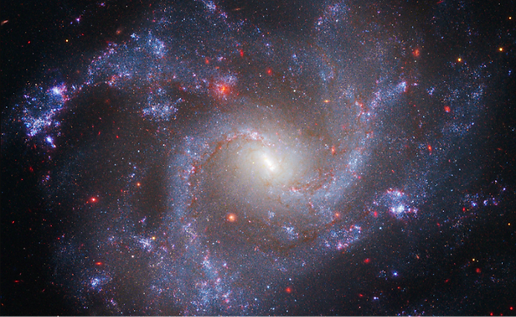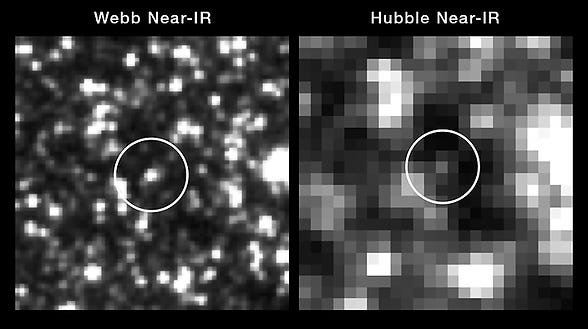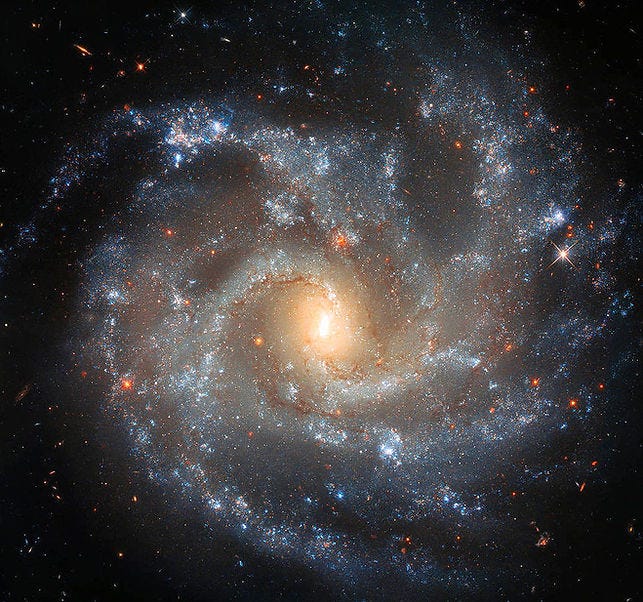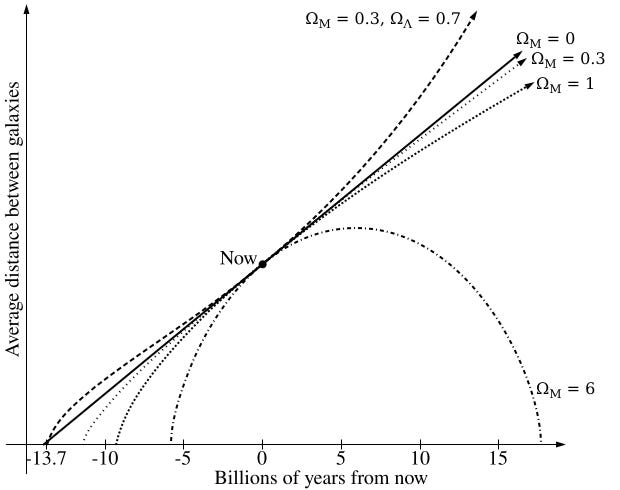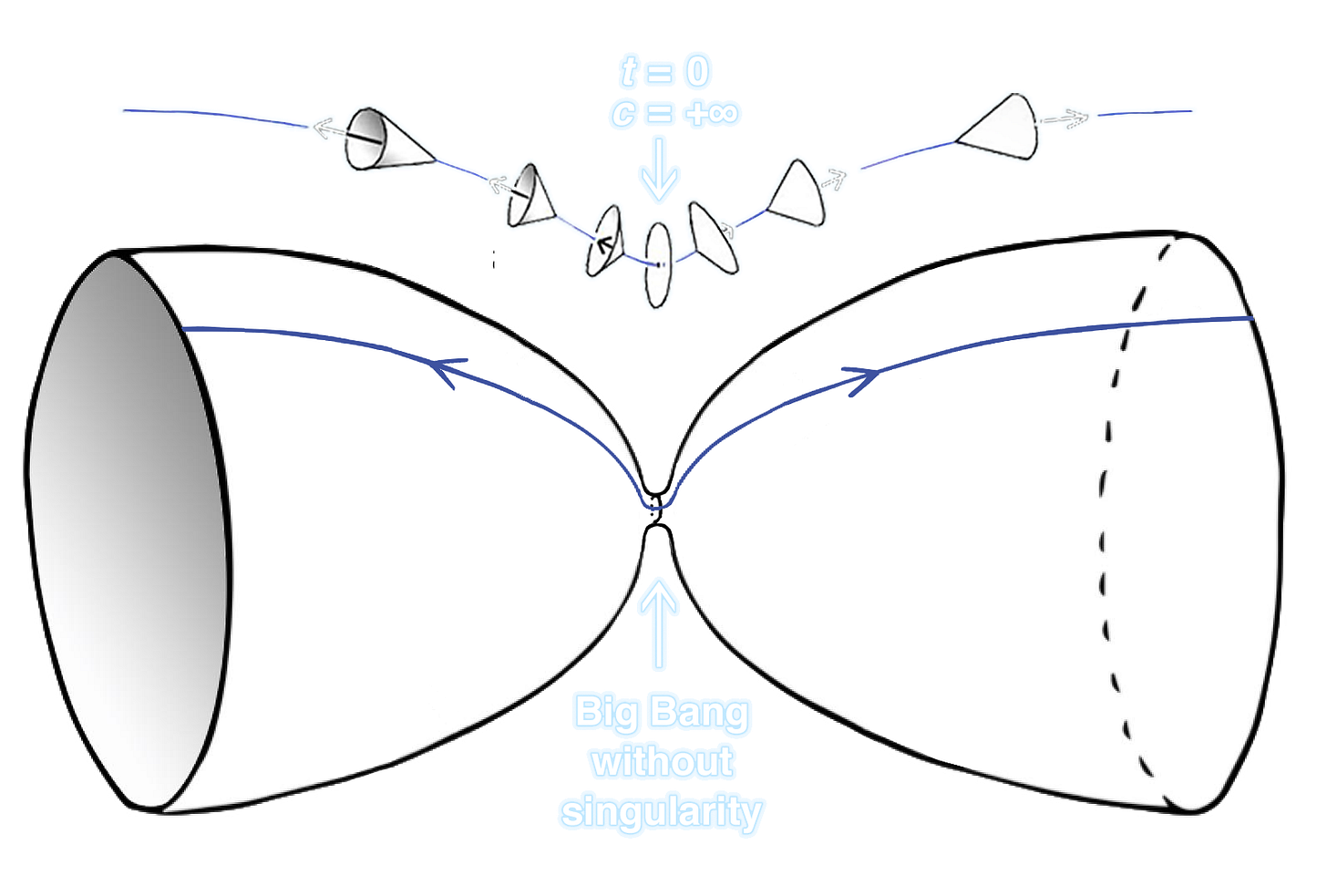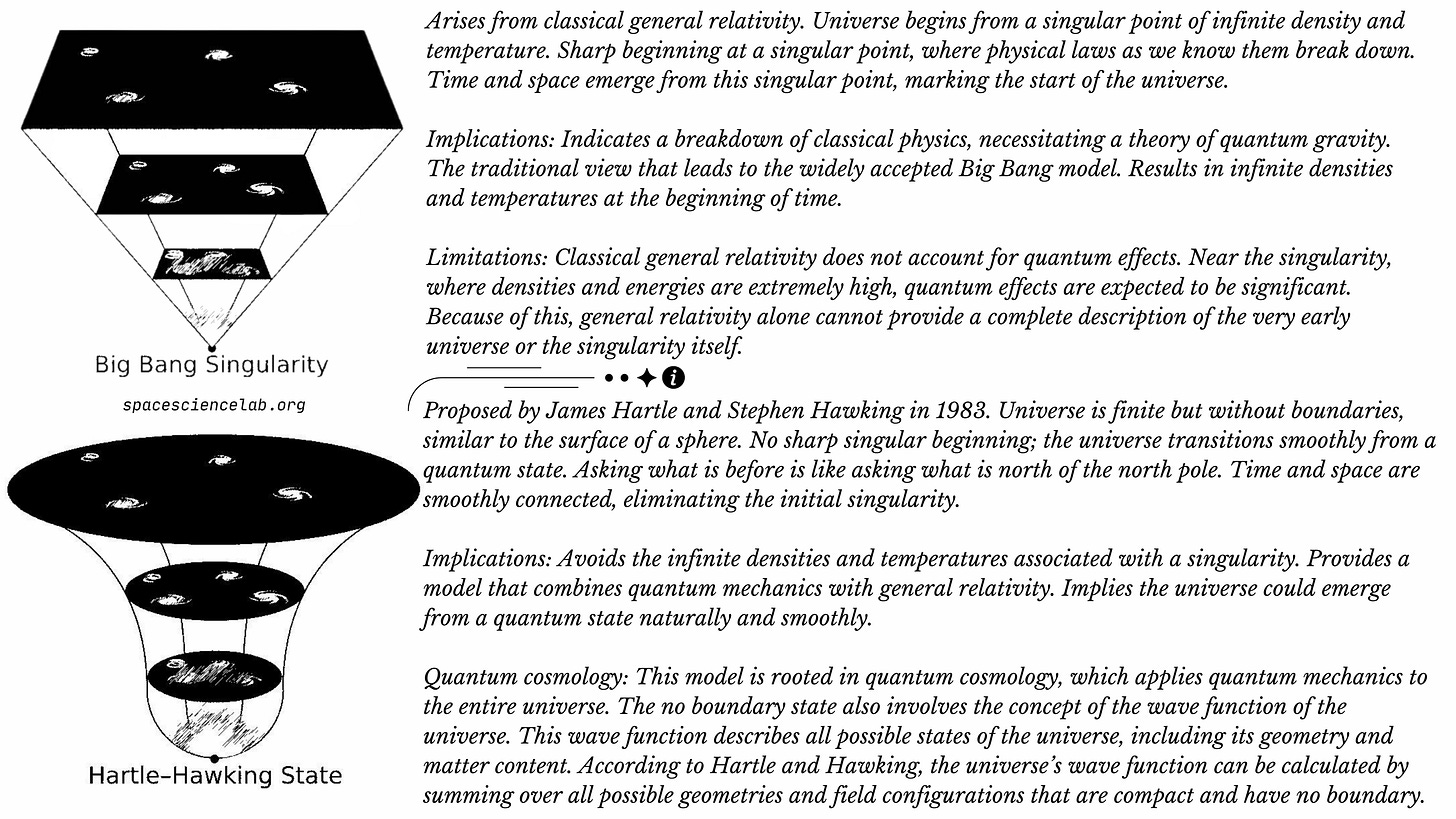Study questions status quo on the universe’s expansion, leaving the door ajar for other theories to have their say.

Observations by the James Webb Space Telescope have confirmed key measurements made by the Hubble Space Telescope, further solidifying the cosmological puzzle known as the Hubble Tension. The discrepancy in the measurements implies a 1-in-a-million chance that the mismatch is due to measurement errors.
Together, Hubble’s and Webb’s confirmation of the Hubble Tension sets up other observatories to possibly settle the mystery, including NASA’s upcoming Nancy Grace Roman Space Telescope and ESA’s recently launched Euclid mission.
The Data
The latest Webb observations include five host galaxies that house eight Type Ia supernovae and a total of 1,000 Cepheids. Among these observations is NGC 5468, located 130 million light-years away, where Cepheids have been extensively measured.
Webb's powerful infrared vision has also enabled the observation of Cepheid variable stars in galaxies like NGC 5584, which is visible at the top in the diagram in one of the arms shown above. These findings align closely with observations from Hubble.
The combined dataset strengthens the case that the 'Hubble Tension' isn't solely due to measurement errors, further deepening the cosmic mystery. Astronomers have utilized Cepheid variable stars to measure distances across the Universe, providing essential data for calculating the Hubble constant, which determines the rate of the universe's expansion.
What's this Hubble tension all about?
This so-called “Hubble Tension” refers to the discrepancy between the measurements of the universe’s expansion rate, known as the Hubble constant, obtained through different methods.
Observations from the Hubble Space Telescope, and now Webb, as well as other local measurements, point to a faster expansion rate for the universe, compared to predictions based on the Cosmic Microwave Background (CMB) and the standard model of cosmology.
Measurements using Cepheid variable stars suggest a rate of around 73 kilometres per second per megaparsec.
Analysis of the cosmic microwave background points to a slower rate, closer to 67 kilometres per second per megaparsec.
The tension has deepened with recent data from Webb, which confirmed the accuracy of Hubble’s measurements and added to the mystery. The Hubble constant is a crucial parameter for understanding the evolution and ultimate fate of the universe, and resolving this tension is a significant task in cosmology today.
Conflicting Measurements: This study presents a clear discrepancy between the expansion rate calculated from Cepheids and the rate predicted by the established cosmological model.
Cosmic Puzzle: This mismatch is extremely unlikely to be due to chance, indicating a gap in our current understanding of how the universe works.
Rethinking the Model: Scientists may need to revise or find additions to the prevailing model of the universe to account for this discrepancy. Using Hubble and Webb data together, scientists say there is a 1-in-a-million chance that the mismatch is due to measurement errors.
In this image of galaxy NGC 5468, located 130 million light-years from Earth, which is one of the galaxies in which Hubble and Webb team up in as it is one of those Cepheid host galaxies.
This data was then cross-checked with a Type Ia supernova's intense light within the galaxy. Supernovae like this allow astronomers to probe even deeper into space, extending our understanding of how fast the universe is expanding.
In this comparison, you can see JWST's superior ability to resolve individual stars in dense regions, which enhances our understanding of stellar structure and processes.
The Webb team's response
"The simple solution to the dilemma would be to say that maybe the Hubble observations are wrong, as a result of some inaccuracy creeping into its measurements of the deep-space yardsticks. Then along came the James Webb Space Telescope, enabling astronomers to crosscheck Hubble’s results. Webb’s infrared views of Cepheids agreed with Hubble’s optical-light data. Webb confirmed that the Hubble telescope’s keen eye was right all along, erasing any lingering doubt about Hubble’s measurements."
"The bottom line is that the so-called Hubble Tension between what happens in the nearby Universe compared to the early Universe’s expansion remains a nagging puzzle for cosmologists. There may be something woven into the fabric of space that we don’t yet understand."
"Does resolving this discrepancy require new physics?"
Exemplifying science
To resolve the Hubble Tension, new physics may be required, or existing models may need to be revised. Cosmology, then, remains an area of active research and exploration, demonstrating the significance of continued study and probing the universe.
This ongoing research and exploration in cosmology exemplify the essence of science itself — the constant evolution and adaptation of knowledge as new data and insights emerge.
It's through the pursuit of understanding and probing the universe that our knowledge of the cosmos continues to expand and change over time.
What the future of the universe depends on
The future of the universe, whether it expands forever, slows down, or collapses, depends on two things:
How much matter it has (Ωₘ)
How much dark energy it has (ΩΛ)
A helpful graph shows the different possibilities:
If there's a lot of matter, gravity wins, and the universe could collapse in a Big Crunch.
If there's just enough matter, expansion slows but never stops—a coasting universe.
If dark energy dominates, the universe keeps expanding faster and faster forever, ending in a cold, dark Big Freeze.
Current data (Ωₘ ≈ 0.3, ΩΛ ≈ 0.7) suggests we’re in this last scenario: an accelerating universe that keeps stretching endlessly. Our universe may
This is why the Hubble Tension matters—it affects how we understand these cosmic ingredients, and which path the universe is really on.
Janus Point hypothesis
But what if the universe doesn’t just move forward in time? The Janus Point hypothesis presents a radically different picture, one in which the universe evolves bidirectionally from a single, central moment.
Time flows bidirectionally from a central point of minimal complexity, not just forward from a singular beginning.
Entropy is lowest at the Janus Point and increases in both directions, reversing the typical view of a low-entropy beginning.
Each side of the Janus Point experiences its own arrow of time, creating two expanding universes.
May offer insight into cosmic puzzles like the Hubble Tension, suggesting our models miss a deeper time symmetry.
Given that the discrepancy is extremely unlikely to be due to measurement error, it may instead point to a particular kind of symmetry in the structure of time itself.
According to the Janus Point hypothesis, the universe does not evolve in a single direction from a state of low entropy; instead, it expands bidirectionally from a central point of minimal complexity. Each side of this point experiences its own arrow of time moving outward.
In this Janus model, what we interpret as "early" and "late" universe data might actually belong to opposite sides of this central point, or reflect distinct phases within a symmetric, bidirectional evolution.
The Hubble Tension could then result from trying to fit this two-sided reality into a one-sided model of time. Rather than indicating a flaw in our measurements, the tension may reveal that we are misreading the expansion history because we assume time flows only in one direction. If the universe is time-symmetric at its core, the faster local expansion rate we observe could be a natural outcome of our position within one branch of that larger, bidirectionally expanding structure.
Such a perspective reframes the Hubble Tension not as a problem to solve, but as a possible signature of a more fundamental symmetry underlying the cosmos.
I thought this might be a wee interesting concept to include here, as it loosely connects to the broader themes. Although the Janus Point hypothesis isn't typically associated with the Hubble Tension, it does provide a speculative lens that resonates with some of the deeper questions the tension raises. This isn’t to say it provides a direct explanation; rather, it raises a conceptual curiosity that adds an extra layer of perspective to the discussion. The door is ajar for unique theories here.
Let’s now see how the tension is applied to another theory…
Hawking-Hartle No-Boundary Proposal
Another bold idea that challenges conventional thinking is the No-Boundary Proposal, developed by physicists Stephen Hawking and James Hartle. Instead of imagining the universe beginning at a sharp point in time, like a classical Big Bang, this theory suggests that the universe had no boundary whatsoever in its beginning.
Using the mathematics of quantum cosmology, the proposal treats the early universe like the South Pole of the Earth. There’s no edge or singular starting point, just a smooth, rounded geometry where space and time gradually emerge. In this view, time itself may not have existed in the earliest phases, meaning the universe didn’t "begin" in the traditional sense, it simply is.
Meaning the universe didn’t "begin" in the traditional sense, it simply is.
This model aims to remove the need for a singularity and allows the universe to emerge smoothly from a quantum state. It's deeply tied to the idea that the laws of physics might naturally select a universe like ours, one that looks classical and expanding today.
Even though the No-Boundary Proposal doesn’t directly relate to the Hubble Tension, it’s part of the broader landscape of theories attempting to rethink the initial conditions and geometry of the universe.
But suppose the Hubble Tension were applied to a Hawking-Hartle universe. In that case, it raises an intriguing question: how would differing expansion rates reconcile with a model that lacks a singular starting point?
In such a universe, where time emerges smoothly from a quantum state rather than beginning sharply at the Big Bang, the tension might reflect not just measurement differences but deeper quantum properties of the universe’s birth.
It could imply that even the initial “no-boundary” conditions allow for more variation in cosmic expansion than previously thought or that our interpretation of time and evolution in that model needs refinement.
Recent work in quantum cosmology, such as that of Kuzmichev and Kuzmichev, has explored how quantum effects, including those described by the Bohm potential, may naturally lead to early-universe behaviours that could resolve the Hubble Tension. While these approaches do not directly invoke the No-Boundary wave function, they reflect a similar way of thinking: that the quantum nature of the universe’s birth could subtly affect how expansion plays out.
This invites the inference that models like Hawking-Hartle’s might one day provide their own explanation, or at least a compatible model for understanding why the universe’s expansion appears inconsistent depending on how and when we measure it.
It will be interesting to see whether these models that question the status quo eventually become the status quo, as progress in cosmology continues.
Thanks for popping by.



